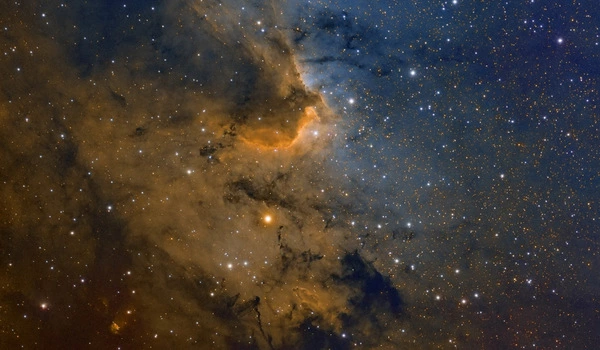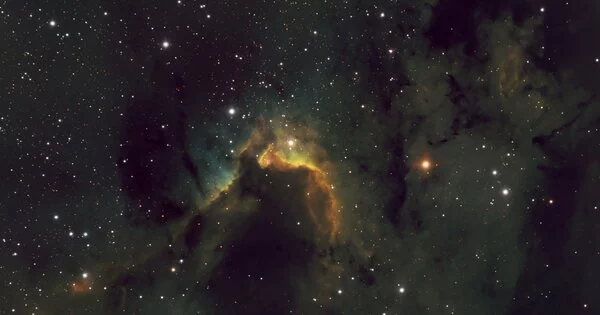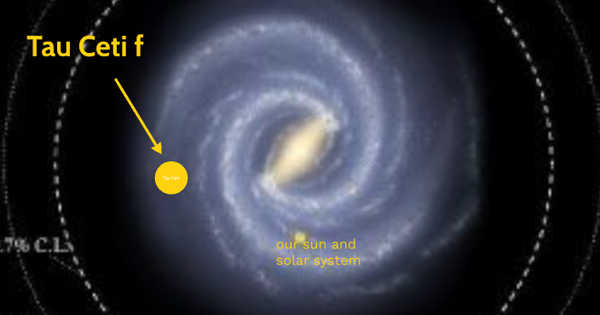Sh2-155 is a diffuse nebula located in the constellation Cepheus. It is also known as the Cave Nebula due to its distinctive shape that resembles a cave opening. The nebula is located approximately 2,400 light-years away from Earth and spans about 50 light-years in size.
Sh2-155 is a region of active star formation, and it contains numerous young, hot stars that are illuminating the surrounding gas and dust. The nebula is primarily composed of hydrogen gas, which emits light in the red portion of the spectrum, and dust, which scatters and absorbs the light from the stars.
It is a diffuse nebula in the constellation Cepheus that is part of a larger nebula complex that includes emission, reflection, and dark nebulosity. The Cave Nebula is widely known, though that name was previously applied to Ced 201, a different nebula in Cepheus. Sh2-155 is an ionized H II region with ongoing star formation activity located 725 parsecs (2400 light-years) away from Earth.
Discovery
Sh2-155 was first discovered in 1787 by the British astronomer William Herschel. It is named after its cave-like appearance, which is caused by a network of dark dust lanes that wind through the bright gas clouds. The nebula is a popular target for astrophotographers, who often capture stunning images of its intricate structure and vibrant colors.

Sh2-155 was discovered as a galactic emission nebula in 1959, as part of the much larger Cep OB3 Association, in the expanded second edition of the Sharpless catalogue. Although Sh2-155 is too faint for amateurs to see, some of its structure can be seen visually through a moderately sized telescope under dark skies.
Location
The nebula is located about 2,400 light-years from Earth and is approximately 35 light-years across. It is a region of active star formation, with a number of young, hot stars embedded within its gas and dust clouds. These stars are responsible for ionizing the hydrogen gas in the nebula, causing it to emit the characteristic red glow that is visible in photographs.
Sh2-155 is ionized by young stars from the Cepheus OB3 association and is located at the edge of the Cepheus B cloud (part of the Cepheus molecular cloud). It has been proposed that radiation from the hot O-type star HD 217086 is compressing the region, causing a new generation of stars to form.
A study of the region’s young stellar objects by the Chandra X-ray Observatory and Spitzer Space Telescope shows a progression of stellar ages in front of the cloud, supporting the hypothesis of triggered star-formation.
The Cave Nebula is a popular target for astrophotographers due to its unique shape and beautiful colors. It can be observed with a small telescope or binoculars under dark skies, but a larger telescope is needed to see its intricate details.
















